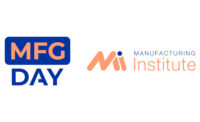JEJU ISLAND, SOUTH KOREA - FEI Co., a provider of high-resolution imaging and analysis systems, announced the selection of its Titan3 80-300 scanning/transmission electron microscope (S/TEM) by the National Institute for Materials Science (NIMS), Japan’s sole independent administrative institution specializing in materials science.
NIMS is charged with carrying out fundamental research and generic/infrastructural technology research and development in the field of materials science, and with improving the level of materials science and technology. Installation of the NIMS system is planned for 2010 at the Tsukuba, Japan-based Advanced Nano-Characterization Center.
The Titan will enable NIMS researchers to create images that not only resolve individual atom columns, but also identify the atomic species in those columns.
“The Titan offers unique capabilities that are critical to achieving our most advanced imaging goals,” says Koji Kimoto, NIMS senior researcher. “One of the most important applications for the new instrument will be element-specific imaging of individual atomic columns in crystalline materials. Performance in this application depends fundamentally on achieving the greatest current in the smallest spot with the least energy spread, and maximizing stability within the timeframe of the acquisition.” Kimoto adds, “Stability of the stage, scanning system, and beam energy were key evaluation criteria. In the end, we are confident that the Titan will help us meet our research objectives.”
“This was a thorough evaluation including the world’s leading electron microscope manufacturers,” said Benjamin Loh, executive vice president of FEI. “Although the selection was based primarily on technical performance, we believe our own long history of local dedicated support and excellent service was also an essential consideration. We look forward to working with NIMS to deliver one of the world’s most powerful, commercially-available S/TEM systems ever.”
The Titan’s aberration correction enables more current in a smaller spot for higher spatial resolution, better signal to noise ratios and acceptable acquisition times. The system’s monochromator allows the user to resolve very small differences in the energy loss spectra used to identify the atoms. The Titan’s X-FEG electron source contributes to superior spatial and spectral performance. Together, these are some of the Titan’s advanced capabilities that help provide sub-Ångström, atomic-scale spatial resolution in both STEM and TEM imaging and the highest achievable energy resolution. The Titan3 also includes an innovative enclosure that significantly reduces environmental interference, providing greater stability and eliminating the need for many expensive lab improvements.
Get our new eMagazine delivered to your inbox every month.
Stay in the know with Quality’s comprehensive coverage of the manufacturing and metrology industries.
SIGN UP TODAY!Copyright ©2024. All Rights Reserved BNP Media.
Design, CMS, Hosting & Web Development :: ePublishing


